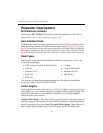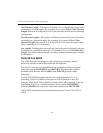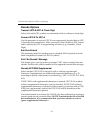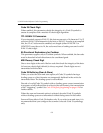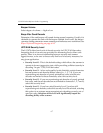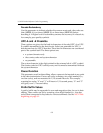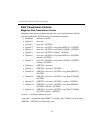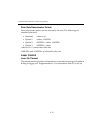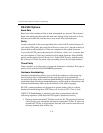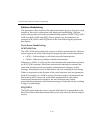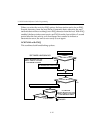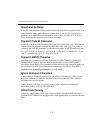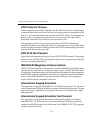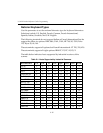
6-11
LS 3070 Product Reference Guide: Programming
RS-232C Options
Baud Rate
Baud rate is the number of bits of data transmitted per second. The scanner's
baud rate setting should match the data rate setting of the host device. If not,
data may not reach the host device or may reach it in distorted form.
Parity
A parity check bit is the most significant bit of each ASCII coded character. If
you select ODD parity, the parity bit will have a value 0 or 1, based on data, to
ensure that an odd number of 1 bits are contained in the coded character.
If you select EVEN parity, the parity bit will have a value 0 or 1, to ensure that
an even number of 1 bits are contained in the coded character. Select MARK
parity and the parity bit will always be 1. Select SPACE parity and the parity
bit is always 0. Select the parity type according to host device requirements.
Check Parity
Select whether or not the parity of received characters is checked. The type of
parity can be selected with the PARITY parameter.
Hardware Handshaking
Hardware handshaking allows you to check the readiness of the receiving
device before data is transmitted. If the receiving device is periodically
occupied with other tasks, hardware handshaking is needed to prevent loss of
transmitted data. Hardware handshaking may not be used in conjunction with
software handshaking. Refer to the flowchart on the following page.
RS-232C communications are designed to operate either with or without
hardware handshaking lines, RTS, Request to Send, and CTS, Clear to Send.
If RTS/CTS handshaking is selected, scan data is transmitted with the
following sequence: (Note that the DTR signal is hardwired active.)
• The base station reads the CTS line for activity. If CTS is asserted, the base
will wait up to one second for the host to negate the CTS line. If, after one
second the CTS line is still asserted, the base will sound a transmit error
and any scanned data will be lost.



